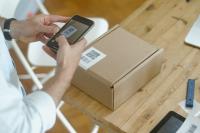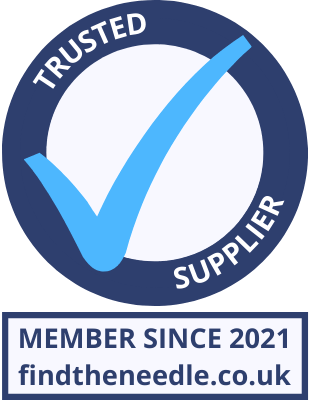 Add My Company
Add My Company
Sign In

Product packaging is being reformed by a mixture of technology, but what does ‘connected packaging’ include and how is it transforming the way brands are engaging and communicating with consumers?
What is connected packaging?
Connected packaging offers a digital experience that allows brands to extend their conversations with customers to relevant content and experiences. This can be done through scanning, tapping, or pointing with a device. Connected packaging can be used in various ways. For example, QR codes, NFC tags (Near Field Communication) and Bluetooth to transform simple packaging and products into an engaging digital experience with tangible outcomes.
How much is the connected packaging industry set to grow by?
According to the Connected Experience Report 2021, connected packaging is the next big trend in retail technology and has the capability to increase connections between consumers and brands. A recent report by Data Bridge, stated connected packaging is predicted to achieve annual growth of 7.4% between 2020 and 2027, (£28.3 billion).
Brand engagement and awareness
Connected packaging is not only informative, educating, and supportive, it also develops an experience for the customer which builds brand engagement and enables customers to gain valuable insight to better understand brands and products. Creating engaging packaging can convert casual buyers into loyal customers.
Connected packaging offers permission from the very beginning, collecting first-party consumer data is seen as more reliable and cleaner than third party cookies.
Types of connected packaging
Each technology is used for a different case, and each have strengths and weaknesses associated with them. Despite performing similar tasks, it is important to understand how each technology differs.
QR Codes
Visible QR codes are used to direct consumers to a chosen URL (web address) from any mobile phone or tablet’s camera. Despite being around for many years, QR codes have become more popular, especially with the pandemic, due to the increasing urge to access information before making online purchases. If you are looking for product engagement, QR codes can be a beneficial communication channel because they deliver quick responses straight from the product. The following shows how QR codes can transform product packaging:
- To enable consumers to confirm authenticity of a product
- To allow suppliers to collect insightful data for future research and analysis
- Using a QR code to automate a product warranty
- Demonstrating how a product can be used
NFC (Near Field Communication) Tags
NFC tags are a more versatile type of connected packaging compared to QR codes; they are designed to communicate information to an interacting device (Apple IOS, Android, and Microsoft). For example, when a smartphone is within the proximity of a tag, radio waves transmit information from the tag to the phone, where it will send a notification allowing customers to perform an action. NFC is also used when people tap their cards or smartphones onto payment devices to purchase items. Alternatively, tapping on product packaging could deliver user guides or re-ordering information. They do not need to be visible, so they can be hidden underneath labels.
During the customer journey, NFC tags are used in pre-purchase and post-purchase. Connected packaging provides a way of collecting valuable data which can provide further insight to target and
Bluetooth Tags
Bluetooth tags became the standard communication of sharing data, which is compatible between almost every device. Bluetooth tags are compatible with IoT (Internet of Things) networks, which can be attached to products that have a wide range of functions.
The world’s first battery-free Bluetooth® sticker sensor tag has already been made. It could be used to provide product information directly to a consumer’s own phone or digital display. Consumers can also get instructions and reminders of how and when to use their products, plus the product can automatically re-order itself shortly before it becomes empty. The adhesive Pixel tags can be printed cheaply and come on a reel.
Connected packaging and sustainability
Sustainability is becoming an increasingly hot topic; more brands urge towards becoming carbon neutral and switching to a more ethical supply chain. Customers are switching to sustainable habits by recycling more and changing their diets. According to Net Imperative, 75% of customers will use their mobile phones to add value to their lives through experiences, such as how to dispose of or recycle a product.
Transparency in the supply chain is key. Having that transparent element to a brand allows customers to understand a brand’s approach to sustainability and the environment. Consumers are more inclined to purchase products if connected packaging provides information about the materials and ingredients used. 77% of consumers state they will use QR codes if it was visible to see.
For more information on Connected Packaging – the top four growing trends in retail technology talk to Cambrian Packaging
Enquire Now
List your company on FindTheNeedle.

